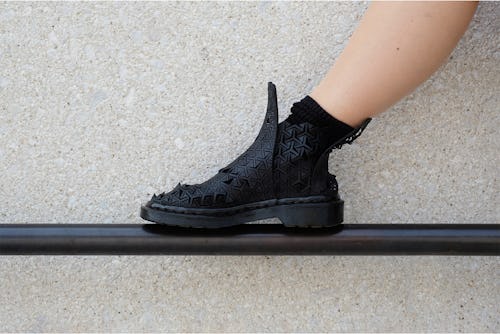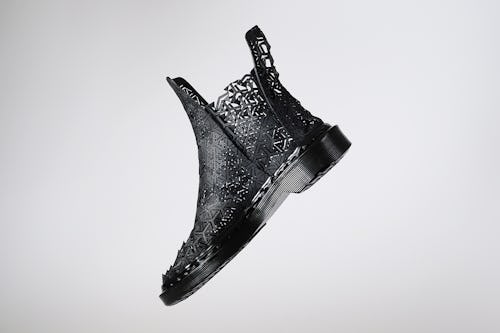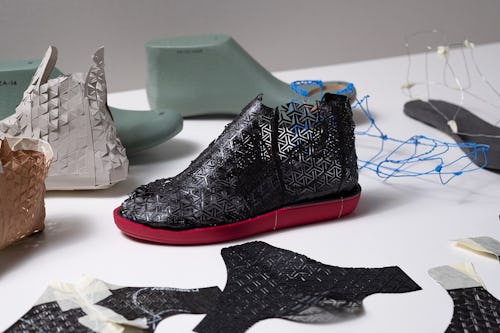
Shoes aren’t one-size-fits-all, but German brand WertellOberfell thinks they could be. Using 3D printing, the company has devised a pair of laceless shoes that naturally adapts to the wearer’s foot.
The design concept for the Auxetic Wear shoes builds off the principles of auxetics, or objects with a negative Poisson’s ratio — think of a snake’s skin or human tendon — that get fatter and thicker when they’re stretched, instead of spreading thin like other materials. Depending on the applied force of the wearer, the shoe will expand or contract, giving it the potential to change its size.

How it’s made —
To create the shape, the designers first had to solidify the shoe’s skeleton. A traditional sole provides support to the auxetic movement and a foundation for the individual panels. WertellOberfell uses a desktop FDM 3D printer to bring the shoes to life and thermoplastic polyurethane (TPU) material to increase their durability and elasticity. The process stems from traditional shoemaking by gluing the printed pieces with the TPU.
It’s not the only company testing the boundaries of 3D-printed footwear, either. Asics’s 3D slides target athletic recovery with cushions that mold to your feet over time. KidSuper and Heron Preston have also taken the technology to their proprietary kicks, and 3D printing has even extended to products like sunglasses.

The Auxetic Wear boot is still undergoing various tests and prototypes, as is typically the case for any tech-heavy footwear. But the latest model has taken on a Dr. Marten-like form with overlapping flaps near the collar to provide maximum movement and a thick boot sole. The company could add some accompanying fabrics to the model to create a whole line of auxetic shoes, but that remains to be seen.
In its current form, it’s not the most fashion-forward footwear, but creating a 3D-printed shoe with adjustable capabilities could add to its accessibility. It also has the potential to solve podiatric issues like blisters and back pain from wearing ill-fitting shoes. We can imagine the shoes will still be adapted to small, medium, or large sizes, but either way, auxetic seems to be the way to go.







